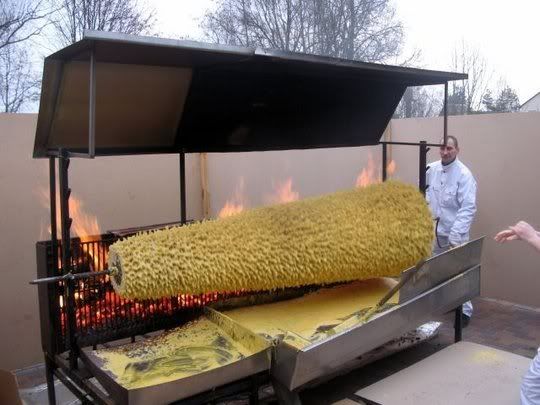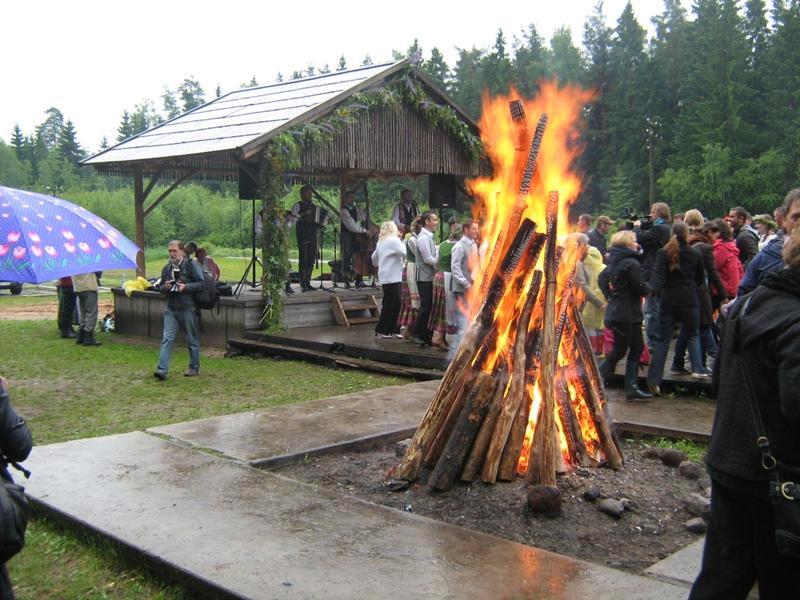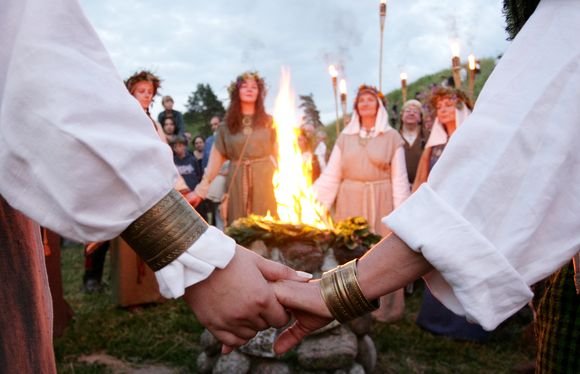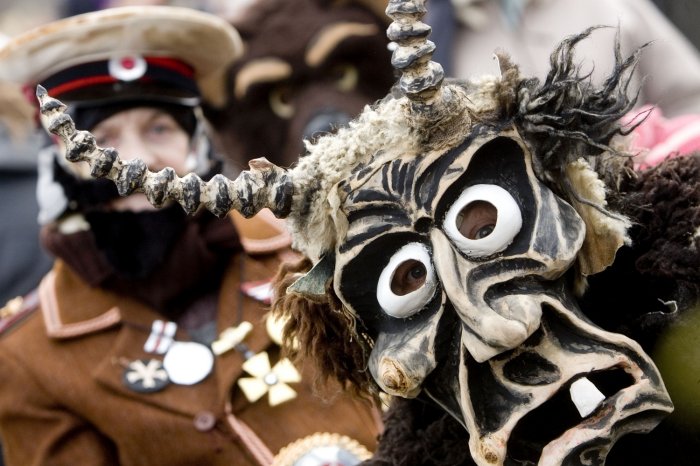[MoFA] Дні культуры Летувы ў Беларусі [ENG]
 •
by
•
by Ministry of Foreign Affairs BY







Паважаныя грамадзяне!
Публікуем артыкул Міністэрства культуры еЛетувы, прысвечаны гэтай краіне.
Артыкул падрыхтаваны на ангельскай мове ў межах Дзён культуры Летувы ў Беларусі.
Мы як і сябры з Летувы спадзяемся, што дадзены матэрыял паспрыяе наладжванню цесных дыпламатычных зносінаў паміж двума саюзнымі дзяржавамі.


Hello!
This article was prepared by Lithuanian Ministry of Culture. We are very happy to see Belarus in ACT and new opportunities to develop closer relationships with your wonderful country.
Recently similar article was published in Lithuania about Belarus. Today we would like to present you some facts about Lithuania. Enjoy!
Music from Lithuania. http://www.youtube.com/watch?v=X4gzygRF2vw
Lithuanian history
Lithuanian and Belarusian histories are very closely connected. We have lived and fought shoulder to shoulder for centuries. Both - Lithuania and Belarus - are proud of Grand Duchy of Lithuania, which was one of the strongest states in medieval Europe, and both nations consider GDL to be “theirs”.
By saying “Lithuania” or “Lithuanian” below, we mean Grand Duchy of Lithuania and understand that Belarus was at least as important part of it, as Lithuania itself.
Lithuania was first mentioned in year 1009 in the Quedlinburg Chronicle for killing a missionary St. Brunon. We were a pagan state and we did not any intruders. Wars with other states (namely the order of Livonia) made Lithuania unite and the person who did this was the first and only king of Lithuania Mindaugas (Mindaug). In the XIVth century Lithuania became one of the biggest countries in Europe after the rule of Gediminaičių (Gediminy) dinasty.
Lithuanian territory ranged from the Baltic to the Black sea. The current states of Ukraine, Belarus and parts of other territories were part of the Grand Duchy of Lithuania. In 1410 united forces of Lithuania, Belarus, Poland, Tatars and others beat the Teutonic order in one of the greatest battles of that time. Lithuanian grand duke Vytautas (Vitaut) used a strategy that was used by tatars and managed to defeat the Germanic knights with low losses. In 1569 Lithuania and Poland created the Polish-Lithuanian Commonwealth. This state was one of the most liberal at that time allowed for three national state movements to start - Lithuanian, Ukrainian and Belarusian.
In 1605 in the battle of Salaspils (The Battle of Kircholm) 3,800 Lithuanian men defeated an army of 14,000 Swedes (history is repeating itself here, huh?). This union went on till it was divided by Russia, Prussia and Austria in 1772-1795 due to poor governance, lack of reforms and weakness of the union. This happened even though Lithuania had written and accepted a constitution in 1771 that is considered to be even more advanced than the French one. Several uprisings were raised, but Lithuania appeared back on the map only after the first World War.
Lithuania declared its independence in 1918 on February 16th. Lithuania had to fight for independence with both Bolsheviks and Bermontians. Eventually the wars ended and Lithuania could be an independant nation recognized by others and accepted into the League of Nations. Even though, the historical capital of Lithuania, Vilnius, remained under Polish occupation. In 1923, after an uprising in Klaipėda (Memel) region, Lithuania regained its main port of Klaipėda. 1926 was the year where authoritarianism started after Antanas Smetona came into power. He was the president until the second Russian occupation that started in 1939.
After the second World War Lithuania remained under Soviet rule as many other countries. Lithuania's liberalization process began after “perestroika” and the establishment of Sąjūdis. Lithuania was the first of the three Baltic countries to declare it’s independence on the 11th of March, 1990. Although the declaration of independence was signed, Russians did not want to leave Lithuania. The best example of that is the events on January 13th, 1991, when fourteen unarmed civilians were crushed and killed and over a thousand were injured under Soviet tanks while defending important objects in Vilnius.
Nowadays Lithuania is one of the fastest growing countries in the European Union. We have faced many obstacles, we still have many future challenges to overcome, but the most important fact is that we are free from outside occupation.

Lithuanian Culture
Cuisine
Probably the best known dish in Lithuania is cepelinai. They are made from meat and potatoes, the two ingredients that dominate the Lithuanian cuisine. Other main dishes are vėdarai (potatoes mixed with bacon, stuffed inside of pigs colon and then cooked), potato pancakes, Žemaičių pancakes (same potato pancakes, but with meat inside).
Another important factor in Lithuanian cuisine is alcohol. Sure, we love and make great beer, but what else? Mead - vodka aged with honey is one of the most traditional drinks in Lithuania. Its strength ranges from 20 to 70% of alcohol. Surely we also make wine. But as grapes do not grow that well in our conditions, wine is made from blackberries or cherries. The traditional non-alcoholic beverages are poppie milk (milk with sugar and poppy seeds, usually consumed on Christmas Eve and is said to have the ability to make animals speak, our mastercarders drink it before important battles), cranberry kissel, and let’s not forget kvass, a very light alcoholic beverage (😵 made from fermented bread, fruits and other ingredients.
The most known desserts are šakotis (definitely very hard to make) and šimtalapis (scalded dough with poppie filling). I do not really know how to make them, but I can assure you that they are really tasty.





Apparel
Although Lithuania has a few ethnic regions that differ in terms of some cultural aspects, among which - national clothing, the key elements are similar across the country. Ethnic apparel has never been an uniform, it was apparel made for occasions thats colours and parts were changed in order to find that is right for the person. Men’s apparel is similar throughout Lithuania.
Women’s clothing differs more as it has more parts. Wed and unwed women had different kind of head clothing. Womens apparel was much more colorful than mens. They had more colour, ornaments, the clothing was much richer in its parts. Everyday apparel was made mostly form linen and tilia.

[img]http://grazitumano.lt/w/images/thumb/a/a6/Pav-3.JPG/300px-Pav-3.JPG[/img]
Lithuanian national clothing today : )

Symbols
The three main symbols of Lithuania are as follows - the flag is yellow (stands for sun), green (fields) and red (blood); the historical flag or the current Coat of Arms with a knight in a red font and Gediminaičių Stulpai, the symbol of the Gediminaičių dynasty.



Holidays
Without the widely celebrated Christmas, New Year and national holidays like the Independence Day, Lithuania also has some very fun holidays that people like. One of them is getting close - Jonas name day celebration, or Rasos (June 24th), in Lithuania. It is the day when the night is at its shortest. After Lithuania adopted christianity it was named after Jonas the Baptist, but it still has all the old traditions. Fires, glories from native plants, the search for the unexisting fern flower and jumping over fires still remain.



Another national celebration is Užgavėnės. It is a celebration that’s aim is to ged rid of winter and to call for spring. In the olden days people avoided any hard work during this day, they even had a saying that if you work during this day, you won't have any rest during the year.
It is celebrated 7 weeks before Eastern. This day is like a carnival, kids put on various masks and go trick or treating. The main course is potato pancakes and the main event is the battle of fatso and kanapinis (a really skinny guy). Fatso represents satiety and kanapinis the people and their wish of spring. Kanapnis wins after a small fight with fatso. This represents the unwillingness of winter to leave earth and the peoples wish of spring.
After that a big doll made of straws, called Morė, is burned. Morė is the goddess of fertility and rebirth. She is burned in order to be reborn and is burned in order to make sure that all the evil, including the winter, is driven away.



Lithuania in eRepublik
In eRepublik Lithuania is not the strongest, but also not the weakest country. We are somewhere in the middle and according to egov.4you.info we are in the 21st plase when ranked by total damage done. Many of our strongest players reside in Poland for bonuses in order to maintain our MU’s. The two strongest MU’s are Lithuanian Shadows (they also have a subdivision for D1-2 players, Lithuanian Shadows Academy) and The Unit. They are well organized and available for hire.
LEO and Gelezinis Vilkas are more oriented towards two-clickers and for the mass population to make their DO’s. The two MU’s concentrated only on younger players are Lietuvos Karo Akademija and COBRA.
There are five big parties in Lithuania, others do not really contest for being in top 5. The biggest party is Lietuvių Nacionalistų Partija (Lithuanian Nationalists Party) with 167 members. Surely there are many non-political players who do not belong to any parties. The country is basically divided into two political fronts that constantly batter each other, but when it comes to fighting we always manage to forget our petty bickering and fight shoulder to shoulder. That also makes the game more fun for those who are interested in politics : )
Greeting to all af you, we hope that you have learned something interesting about real-life Lithuania. Best of all!
Regards,
The Ministry of Culture of Lithuania

Жыве Летува!
Жыве Беларусь!
З павагай,
Міністэрства замежных спраў еБеларусі


Comments
From Lithuania with love o7
Thank you, Lariox! 🙂
Nice article and pictures 😉
o7
V
Long Live Lithuania!
Nice to read , voted : )
o7
battle of Salaspils = Kircholm ?
yes, the Battle of Kircholm of 1605
Hail Belarus!
Hail Lithuania!
o7
Nice article and pictures
Long Live Lithuania!
Добра.
Hail Lietuva!
Hail Belarus!
o7
Greetings from Lithuania : )
o7
Hail Lithuania !
Hail Belarus !
GJ
Voted!
Hail Lithuania !
Hail Belarus !
Hail Belarus!
Hail Lithuania!
Цікава, што ў эсперанта сучасная Літва называецца Litovio, а гістарычная - Litvo. Я гэта не дзеля нацысрача ўзгадаў, а так проста прыпомнілася. Нешта яны там (беластоцкія габрэі) сто гадоў таму такое ведалі, чаго мы сёння не ведаем)
А можа так яно і трэба? Меней бы пустых спрэчак узнікала вакол агульнай спадчыны
І да:
Hail Lithuania !
Hail Belarus !
Жыве Летува!
Жыве Беларусь!
Hail Беларусь, hail Lietuva!
\о
о/